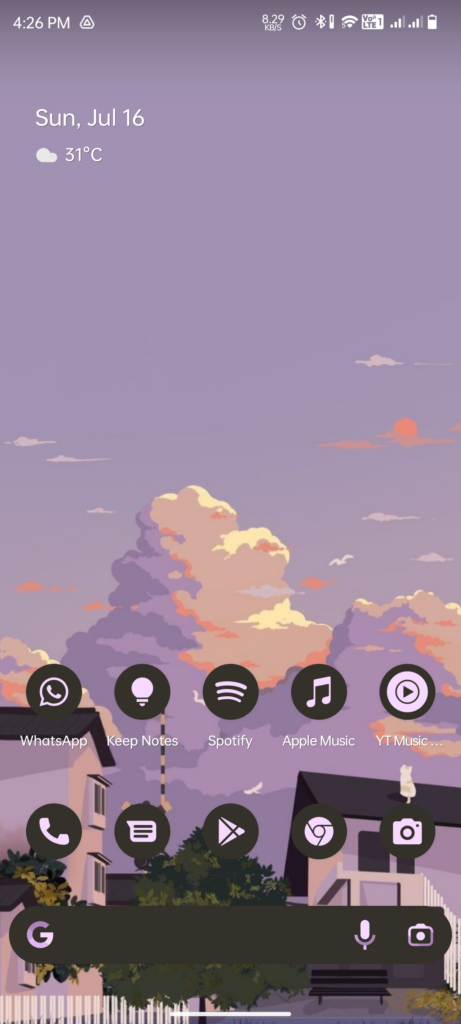On january 2023 I needed a new smartphone. I searched heavily for a budget Android one, which I could run “de-googled”. I ended up with a Xiaomi Redmi Note 11, as it was relatively new, cheap and supported by SparkOS, a custom ROM I could run without Google services.
All of this was possible thanks to Sayan Sarkar, a young Indian guy, spending his free time maintaining the “spes” port of SparkOS (“spes” is the codename of the Redmi Note 11).
So I took the chance to contact him and ask a few questions. Here below you can read our short chat.
P.S.: please note that Q&A were taken on summer 2023 so I’m publishing them ~1 year later! Take this into account, when reading and… sorry, Sayan, for such a delay!
Q1: Hi Sayan, let’s start telling us a bit about you…
A1: I’m 19, living in a small town named Krishnanagar in West Bengal, India. I’m currently in my 2nd year of senior secondary school, where I’m studying Humanities. When not at school, I spend most of my time at home, in front of my PC. Also, I like to go out and take photos with my phone as well
Q2: tell us a bit about your computer, your Internet connection, your smartphone and its data-plan
A2: I currently have ASUS TUF F17 notebook, powered by an Intel i5-11500H, an Nvidia RTX 3050 (Mobile Edition), 16GB of RAM and 1TB of storage.
My Internet connection is provided by a local broadband provider, granting me a 100Mbps/100Mbps download/upload bandwidth
As for smartphones, I currently use 2 devices: a Redmi Note 11 (spes) and an older Redmi 6 (cereus). They are granted 2GB of daily traffic by my SIM operator
Q3: would you mind sharing your “desktop” and “smartphone screen” with us?
A3: Sure, I would love to share that.

Q4: As for SparkOS, what’s your role?
A4: I’m currently the official mantainer of the SparkOS to the Xiaomi Redmi Note 11 (codename: SPES – see: https://spark-os.live/download/spes )
Q5: when did you started contributing to SparkOS, and what triggered your interest in SparkOS?
A5: I started contributing to SparkOS on January 2023.
SparkOS caught my attention last year when one of my fellow friend was using it on his device.
I found SparkOS to be a lot different from other ROMs because of some features which were exclusively present on SparkOS. One of the most unique feature i found was the dual space feature it was very interesting to see it getting into AOSP as earlier it was only there in Miui etc and the ability to customize a lot of things in the ui without loosing stability as in some roms a huge amount of customisation creates a lot of lag.
Q6: would you say that contributing to SparkOS is a difficult task? Would you suggest to other young people, like you, to spend time on these kind of activities? Isn’t it too-much difficult?
A6: Yes, contributing is difficult sometimes but thankfully there are some great experienced maintainers very willing to help young contributors when we get stuck with some error or face any issue.
I would highly suggest contributing to any ROM to everyone being interested in ROM flashing or generally interested in Android and its UI. Not only you’ll enjoy such an activity, but it also gives you lot of ideas about how ROMs, kernel and all the other system components relates each other to let your smartphone works the way it is.
As for technical difficulties, they are literally everywhere these days and surely you will face them somehow. But they will be less and less by time. And don’t forget that lots of experienced developers are ready to support you: just ask, and they will help!
Q7: what has been the most difficult single activity that you had to face, to release the SPES port of SparkOS?
A7: The most difficult task is to maintain the device tree: sometimes we need to rebase related git-branch and it takes a lot of time to do that. I am referring to my main androd_device_xiaomi_spes GIT-repo which is the device tree for spes: it needs to be updated regularly and a lot of things needs to be up-to-date with the source as Google gives a lot of changes after each QPR.
Other main difficulties that I face are:
- the lack of testers: people don’t come infront for testing the builds and I always don’t have time to test the builds myself, which sometimes results in minor bugs getting discovered after the release; around 1-2 people test it before the release to find out about any major bug or issues which needs to get fixed.
- that building/compiling the ROM is really a compute-intensive activity and requires lots of time. It would be useful to rely on high-end servers, but this is not possible as as they are kinda expensive. I currently build using servers which I have to buy every month which costs about 300inr(3$), I’m also trying to shift to a local machine but as syncing sources takes a lot of time and even 16gb ram is enough to build on my local machine, I need at least 32GB of ram to build locally and 12 core is more then enough to compile within 1.5 to 2 hour.
Q8: How much time (in general terms) do you spend, maintaining SPES/SparkOS?
A8: As a general figure, I spend almost around 2-3 hours per day. Of course they could be less or more, depending on how much of work has to be done on that day. As of now for working on the device tree I use my local machine and it takes around 15-20min to sync it(it can also depend on the size of the repo) after that doing the changes and cherry-picking some patches or commits from other repos and fixing the conflicts, all of this takes about an hour or two to do roughly.
Q9: Xiaomi Redmi Note 11 has been released on january 2022. Current one is Redmi Note 12 (january 2023), with Redmi Note 13 soon to be released. Will you be able to follow such trend? How much easy/difficult is the process to “follow” the market, by supporting the newly-released devices?
A9: Well for me buying and maintaining another device will be really hard as I don’t have that much money in my hand to buy a new device. I’ll be sticking with spes for a few years then I’ll buy a new device and yes I’ll be maintaining SparkOS and a few others roms for that device.
Q10: Apart from maintaining the SPES port of SparkOS, are there some other ICT-things that you happily spend time on?
A10: Apart from maintaining SparkOS I like to spend my free time by going out and taking pictures, reading books and play some games –like Valorant– with my friends. If I get some time off me and one of my friend, I also work on a website development. I can’t really tell about the the project right now as me and my friend did it in our holidays and later on didn’t got enough time to maintain to so we took it down we still try to work on it on free time on a private repo, we’ll try to make it public once some stuff gets fixed. I mainly worked in managing the GitHub repo and testing the website and my friend worked with the website interface.
Q11: how do you see yourself in 5 years? And in 15 years?
A11: well it’s a really difficult question for me as I am just 19 years old and I haven’t really figured out life right now. After my school ends I will probably study with B.A. in psychology and then Masters then PDH and maybe I’ll get into research work, that’s the rough plan I have in my mind.
Thank you, Sayan, for your time, and for granting me the possibility to use SparkOS!


